Fantastical rockwork and koi pond at Japanese Tea Garden in San Antonio
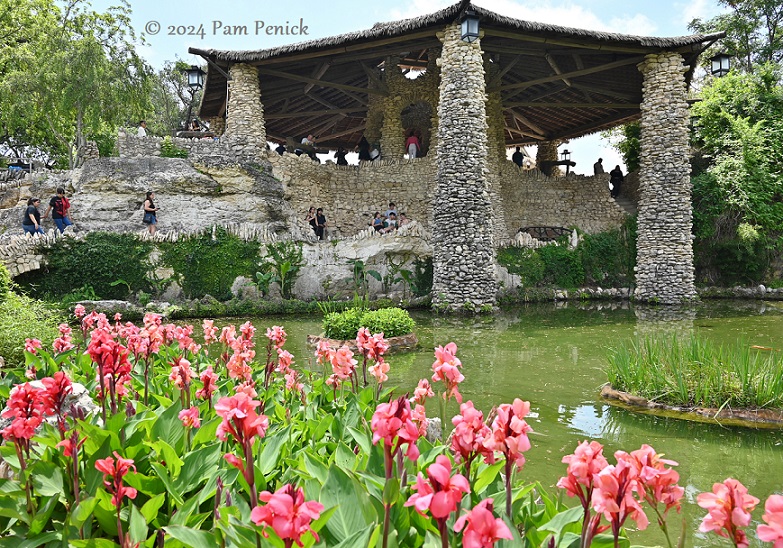
While hunting for faux bois works throughout San Antonio last month, I couldn’t miss the chance to visit the Japanese Tea Garden in Brackenridge Park. I was last there 11 years ago, and I was eager to see its distinctive rock architecture again.
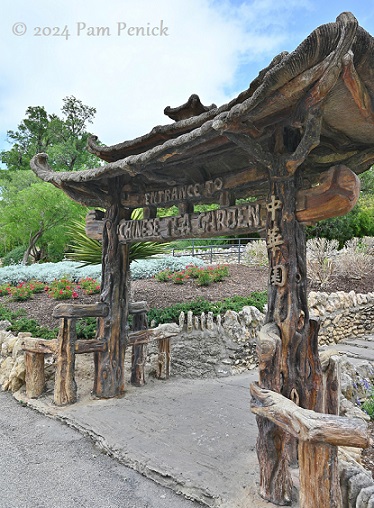
A torii gate of faux bois — or trabajo rustico, as they call it in San Antonio — marks the garden’s entrance. Hand-crafted in 1942 by Dionicio Rodriguez, the gate is a work of art but also a relic of wartime passions. The gate reads Chinese Tea Garden, not Japanese Tea Garden. That’s because the gate was built the year after the Japanese attacked Pearl Harbor. As the United States went to war, the city evicted the Japanese family who’d lived in the garden since 1926, running a restaurant there. The garden was renamed, and a Chinese-American family took over the restaurant.
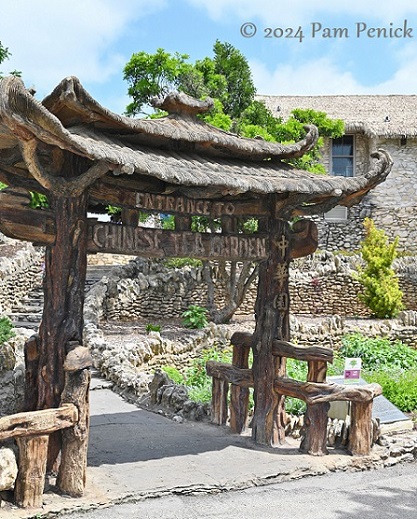
Forty-two years later, in 1984, the Japanese Tea Garden name was officially restored, and the torii gate remains as a historical artifact.
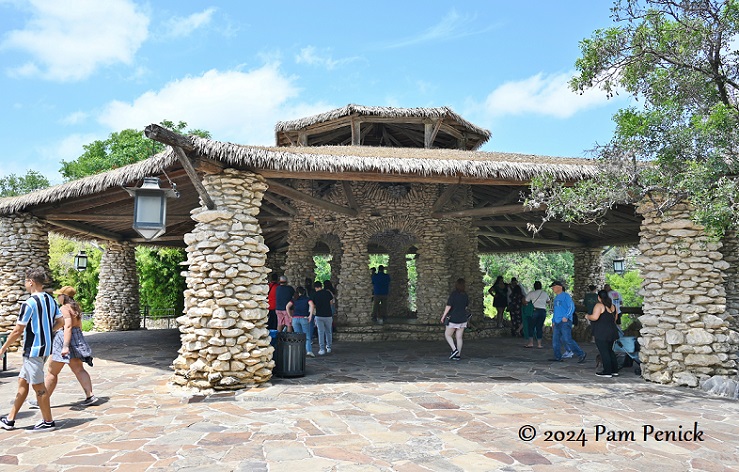
The garden was built on the scarred site of an old limestone quarry and cement plant that closed in 1908. When Brackenridge Park was being developed, park commissioner Ray Lambert envisioned a sunken garden and lily pond on the site, and he used prison labor to get it built in 1918-1919. A thatch-roofed limestone pavilion was constructed at the edge of the old quarry, overlooking an enormous koi pond and arched bridges and a 60-foot waterfall cascading off the opposite cliff. (The thatch roof is now faux thatch, I read.)
Japanese-style gardens were popular then. Lambert dubbed his creation the Japanese Tea Garden and invited the Jingu Family to move into a stone house in the garden and operate a restaurant as a tourist attraction. Today you can dine in the garden at Jingu House, next to the stone pavilion, and I enjoyed a pleasant lunch on the patio.
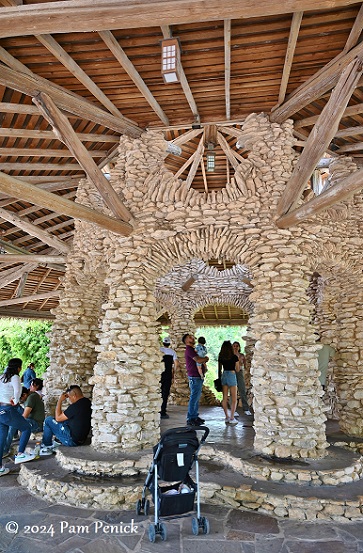
The pavilion’s supersized shade structure and unique rockwork, not to mention the view it offers, makes it the hub of the garden.
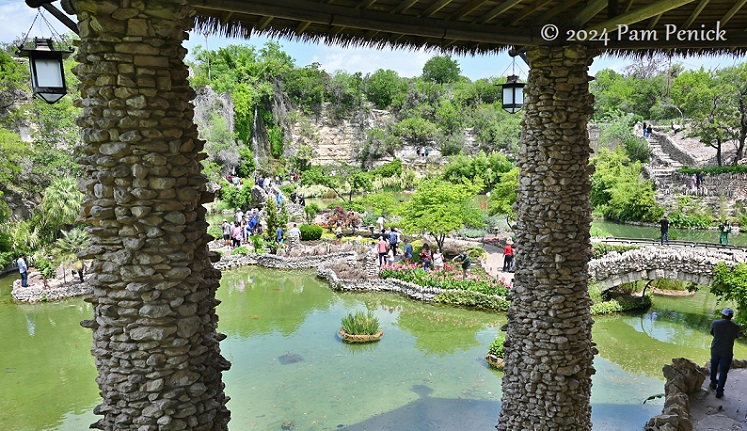
Under its vast, fringy roof, you can look out across the sunny garden.
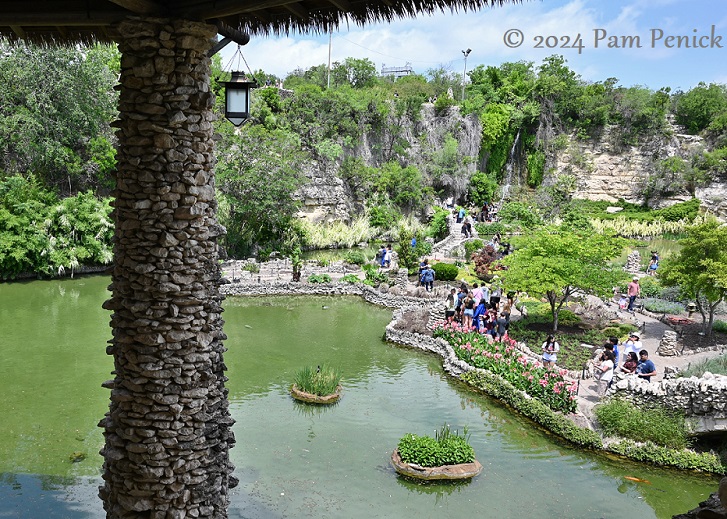
Rock-edged trails and bridges wind through the garden and along the green pond. There’s also a cliffside trail that runs along the top of the old quarry.
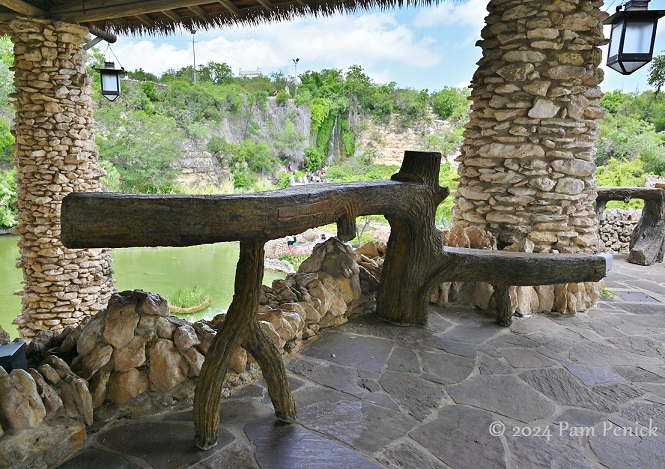
Faux bois tables and benches can be found under the pavilion, ready for parties and events.
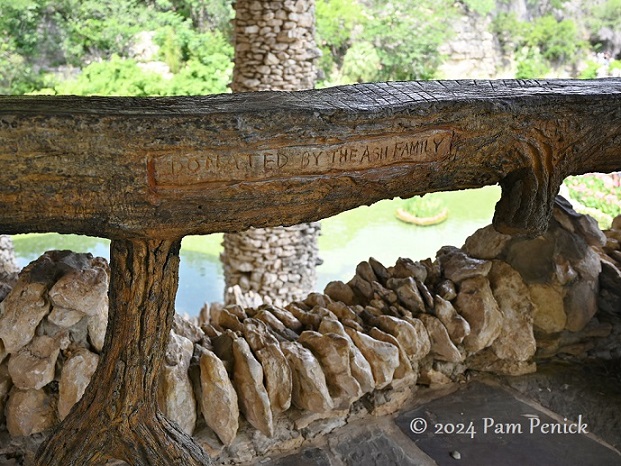
Faux bois is sculpted concrete made to look like wood, and San Antonio is devoted to it.
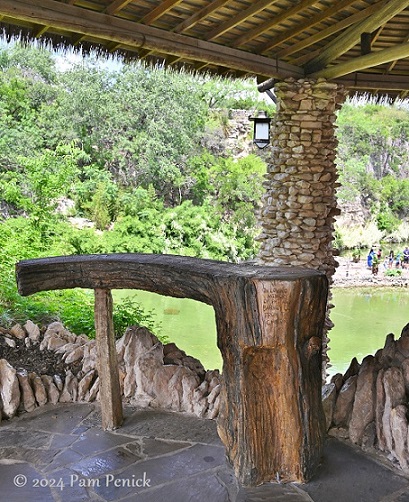
One more
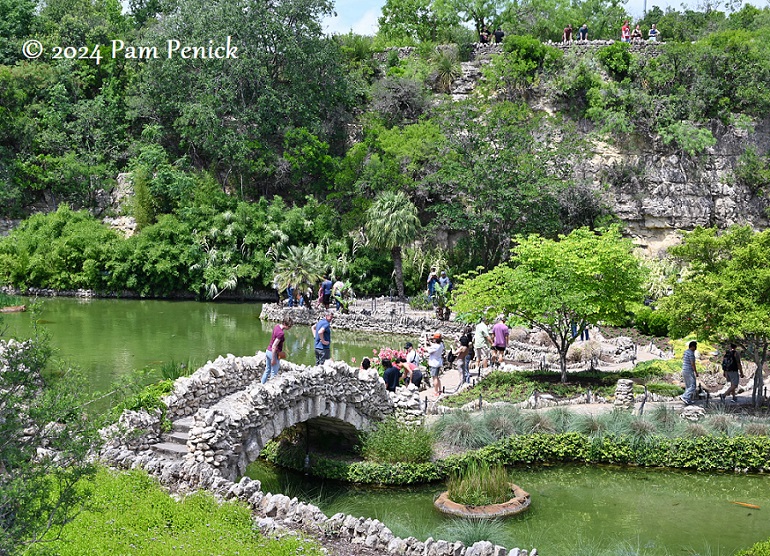
The garden has a tropical feel with palms and cannas, although small native trees and perennials also grow here.
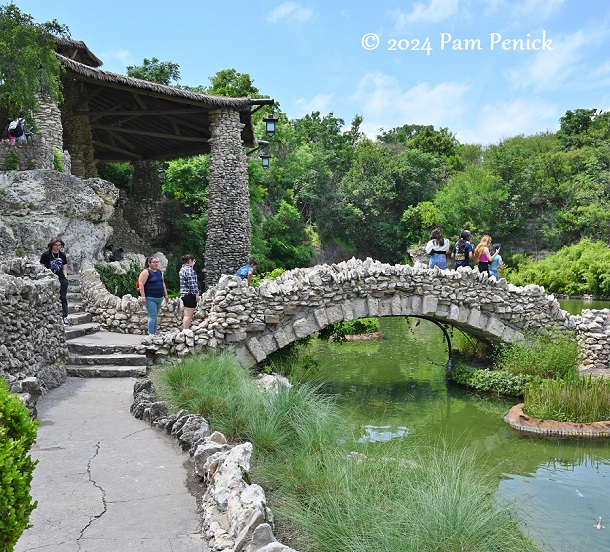
For me, the unique stone architecture is the garden’s biggest attraction.
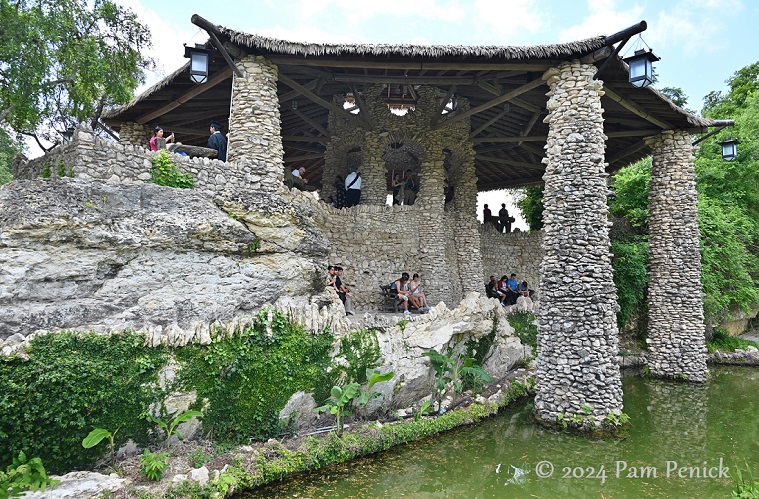
There’s something elemental about the stacked-stone pillars rising from the pond and the limestone cliff.
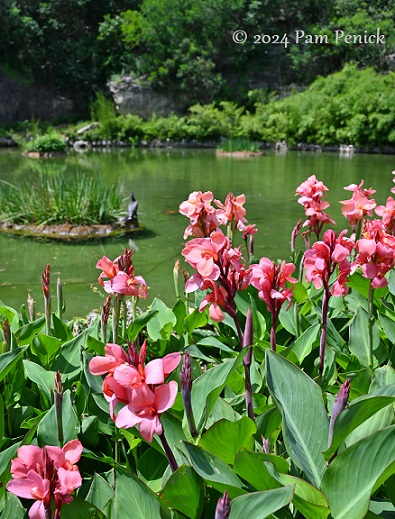
Cannas flowering along the pond
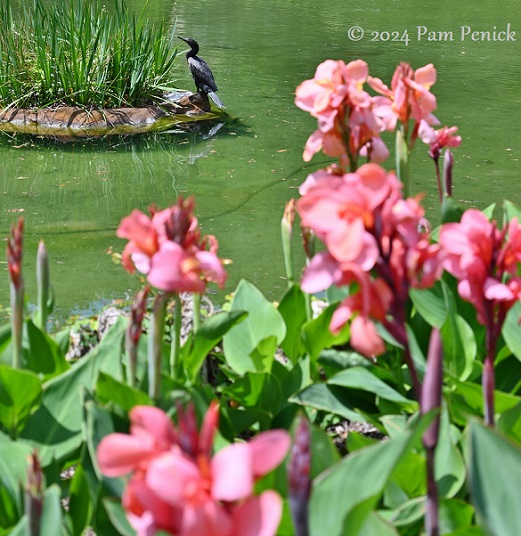
A cormorant (I think) perched on one of the floating islands — fishing, perhaps?
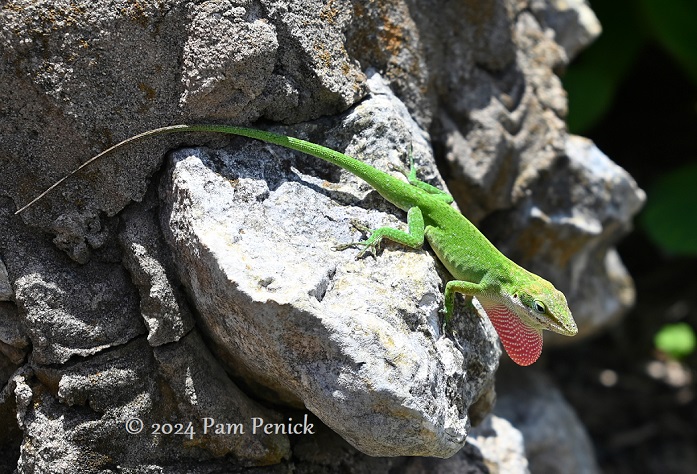
An anole displaying his dewlap, either territorially or in courtship.
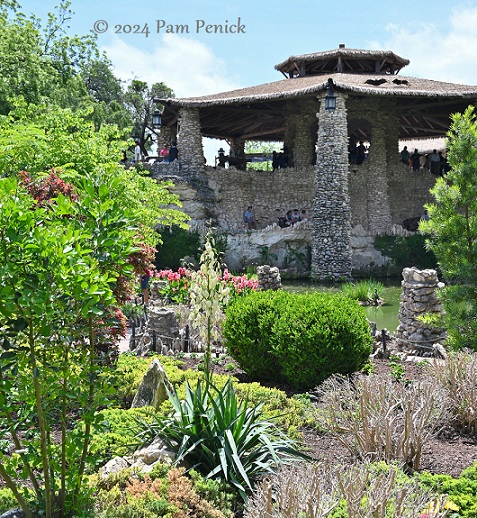
A yucca was flowering alongside hard-pruned cenizos (why? too big?), which were just leafing out. Two cormorants were drying their wings atop the pavilion roof.
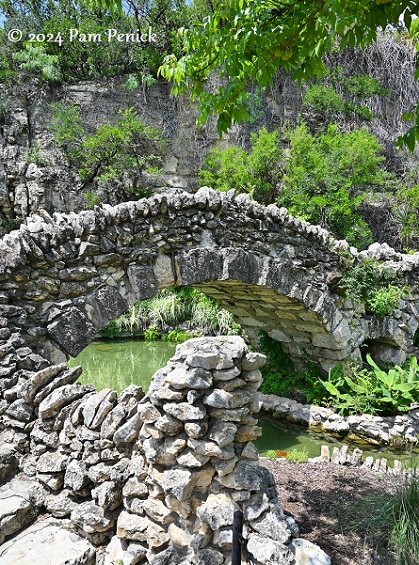
The humped bridge has vertical slabs of rock for a handrail, like some old stone walls I’ve seen.
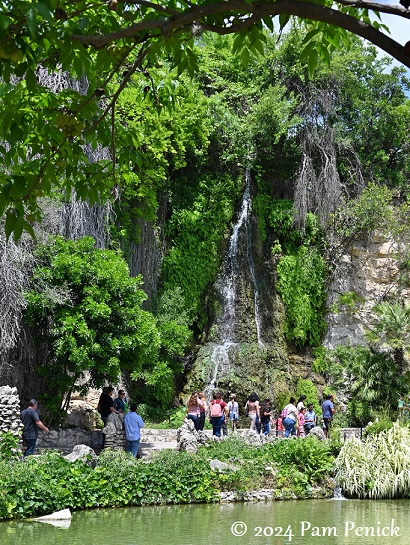
A ribbon of white water cascades from the opposite cliff, attracting visitors.
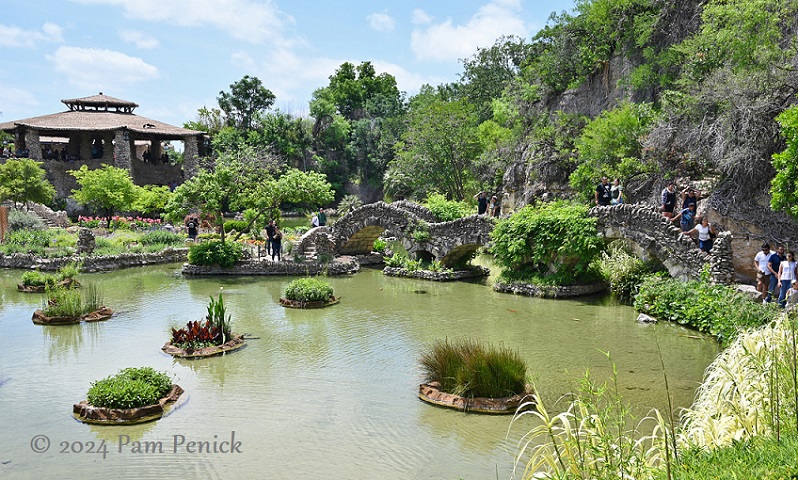
The long, arching bridge looks like the humped, armor-plated back of a dragon.
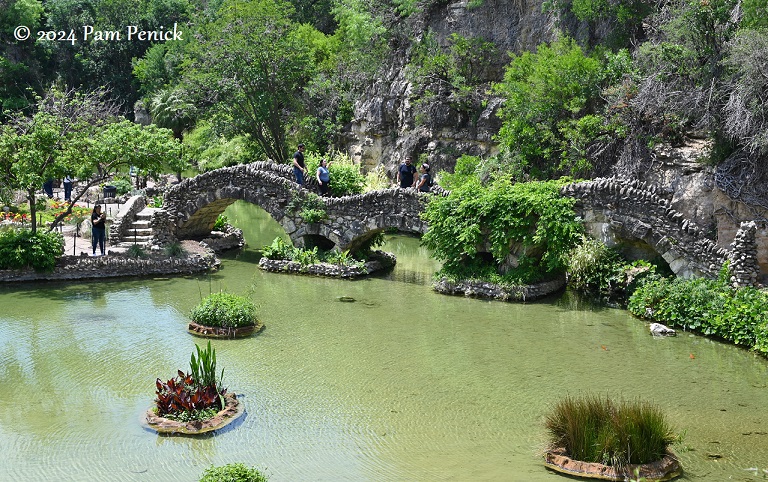
A closer look
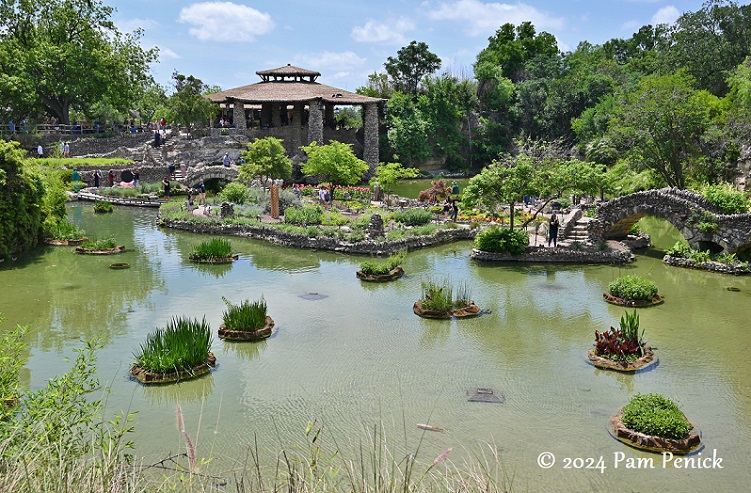
Koi as big as your arm meander among the floating islands, enjoying their watery kingdom.
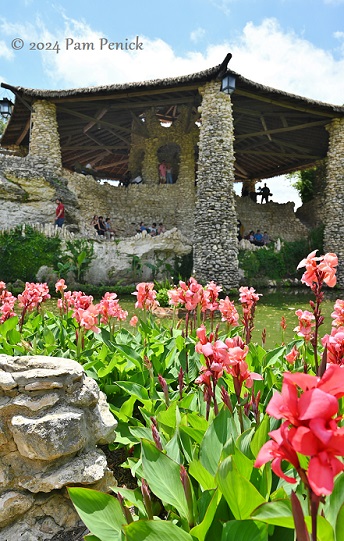
One last look at the stone pavilion and cannas
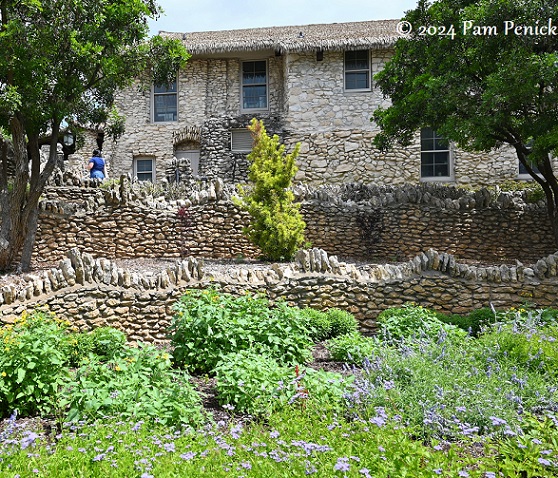
Outside the garden, Jingu House and terracing walls display more of the garden’s striking rockwork.
I welcome your comments. Please scroll to the end of this post to leave one. If you’re reading in an email, click here to visit Digging and find the comment box at the end of each post. And hey, did someone forward this email to you, and you want to subscribe? Click here to get Digging delivered directly to your inbox!
__________________________
Digging Deeper
May 11: Tour four Austin gardens on 5/11, from 9 am to 3 pm, on the Inside Austin Gardens Tour. Each garden “is created and cared for by a Travis County Master Gardener and demonstrates realistic gardening practices that inform and inspire.” Tickets are $25, or free for children 12 and under.
May 18: On Austin Home’s Great Outdoors Tour, held 5/18 from 10 am to 3 pm, find “Pinterest-worthy pools and outdoor kitchens to thoughtful plantings and stylish urban density solutions.” Tickets are $30.
May 18: Pop up to Dallas for the 2024 DCMGA Garden Tour on 5/18 from 10 am to 5 pm. Tickets are $18 if purchased online prior to 6 pm on 5/17, or $22 after 6 pm on 5/17 or at the event. For a sneak peek, click here.
June 1-2: Take a self-guided, 2-day tour of ponds and gardens in and around Austin on the annual Austin Pond and Garden Tour, held 6/1 and 6/2, 9 am to 5 pm. Tickets are $20 to $25.
Come learn about gardening and design at Garden Spark! I organize in-person talks by inspiring designers, landscape architects, authors, and gardeners a few times a year in Austin. These are limited-attendance events that sell out quickly, so join the Garden Spark email list to be notified in advance; simply click this link and ask to be added. Season 8 kicks off in fall 2024. Stay tuned for more info!
All material © 2025 by Pam Penick for Digging. Unauthorized reproduction prohibited.


You find the most interesting gardens to visit. This garden reminded me of Butchart Gardens in BC Canada.
That one is built in a quarry too, right?
The stacked stone pillars are fantastic. Thanks for sharing all the history of this place!
It’s my pleasure, Tracy!